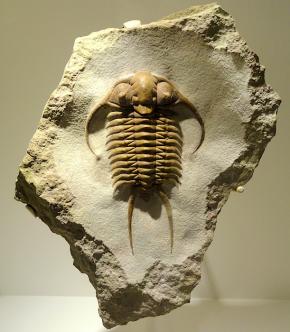Geologists estimate the age of rocks using a variety of techniques. Absolute dating attempts to determine the numerical age of an object. Relative dating techniques place rocks in their sequential order of formation. Absolute dating is primarily accomplished through a technique called radiometric dating.
All matter is composed of chemical elements, and each element is distinguished by a specific number of protons. For example, an atom of the element carbon has six protons. While all carbon atoms have six protons, they may vary in their number of neutrally charged neutrons. These variants are called isotopes. A common carbon isotope with six protons and six neutrons is called ŌĆ£carbon-12ŌĆØ (12C) because its total atomic mass number is 12. An atom of the more rare sister isotope ŌĆ£carbon-14ŌĆØ has six protons and eight neutrons.
Some isotopes are considered to be radioactive because they decay over time and emit ionizing radiation in the form of energy and particles. The rate of decay of a radioactive isotope is measured in terms of its half-life, or the amount of time required for a material to decrease by one-half. Scientists can use this information to calculate the absolute age of an object containing a particular radioactive isotope such as carbon-14.
Carbon-14 has a half-life of 5,730 years. After an organism dies, it stops absorbing new carbon-14 from the environment, and the isotope begins to decay at an exponential rate. Only half of the original carbon-14 isotope will remain in the fossil 5,730 years after the organism died. Only half of that, or one-quarter of the original isotope, will remain 5,730 years after that, or 11,460 years after the organism died. Scientists can analyze the rate of radioactive decay in a fossil and use that information to calculate the date when the organism died.
For more detail on radioactivity isotopes and radioactive decay calculations, see Module 2 Unit 4: Chemical Tracers in Water (Topic 2.4.2 Tracers in the Ocean). For more information on stable isotopic see Module 2 Unit 7: Seafloor Chemistry (Topic 7.2: History of the Ocean).
The age of rocks and fossils can also be determined using relative dating. The main concept behind relative dating is the Law of Superposition, which states that each layer of sedimentary rock is younger than the layer below it, but older than any layer above it. Imagine a layered cake: the bottom layer of cake is the oldest. The top cake layer is youngest and is put down last.
SF Fig. 7.7. This fossil of Paraceraurus exsul belongs to a group of extinct marine animals called trilobites. Trilobites share a common evolutionary ancestor with modern insects, spiders, and crustaceans. This fossil dates to approximately 470 million years ago, during the Paleozoic era.
The use of reference fossils also can help with relative dating. If certain fossils are known to be common during a specific geological time period, their presence is useful in determining the relative age of a layer of rock. For example, we know from using absolute dating methods that the trilobite Paraceraurus exsul crawled ocean floors from 480 million to 360 million years ago (SF Fig. 7.7). Using this date as a reference, we can infer that a fossil found nearby in a deeper layer of rock would likely be older than 480 million years.








